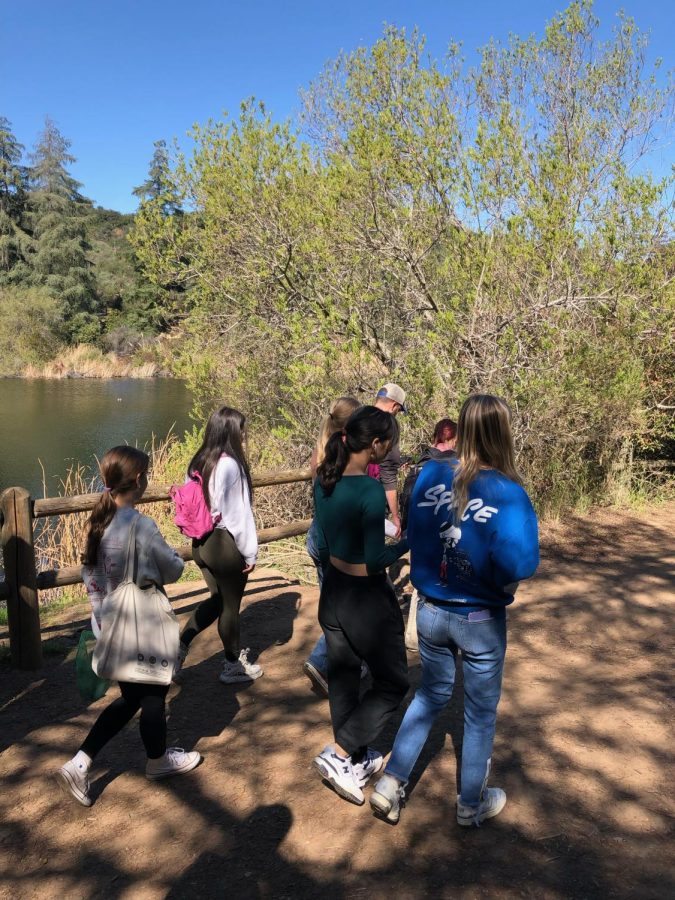AP Environmental Science classes visit Franklin Canyon reservoir
AP Environmental Science students walk next to the Franklin Canyon reservoir, surveying the land around them.
February 23, 2022
Advanced Placement (AP) Environmental Science classes visited Franklin Canyon reservoir for their second field study Feb. 15, 16 and 22. The outdoor lab covered water pollution and its effect on organisms.
At the canyon, students split up into groups and used lab instruments to measure the turbidity, oxygen saturation and nitrate concentration of two water bodies, which allowed them to evaluate and compare their respective pollution levels. They also made their own water filters and collected water samples to later analyze their bacteria percentages. AP Environmental Science teacher Nadine Eisenkolb said she planned the trip to Franklin Canyon because of its proximity to the school and the variety of water types.
“It is very useful to have both a location that is both very close to [the Upper School] and a beautiful spot in nature,” Eisenkolb said. “I also like that [Franklin Canyon] has different kinds of freshwater to study the health of.”
Nathalie Paniagua ’23, who participated in the Feb. 15 trip, said the experience allowed her to better understand water quality.
“Splitting up into groups and gathering samples from different locations helped us learn more about water pollution and its effect on the quality of water other organisms depend on,” Paniagua said.
Alex Astalos ’23 said she enjoyed the time to appreciate and think deeply about the environment.
“For me, the hike to the reservoir we took re was a great way to get in touch with nature,” Astalos said. “It gave [students] a nice few hours to stop and reflect on an important environmental problem.”
Eisenkolb said she hopes the study helps students observe the effects of water contamination from a firsthand perspective.
“There is importance in taking students outdoors and experiencing labs in nature because that is what formal environmental science often involves,” Eisenkolb said. “Collecting water samples and showing them in tubes to students is less effective than them actually seeing the sources water comes from.”





























